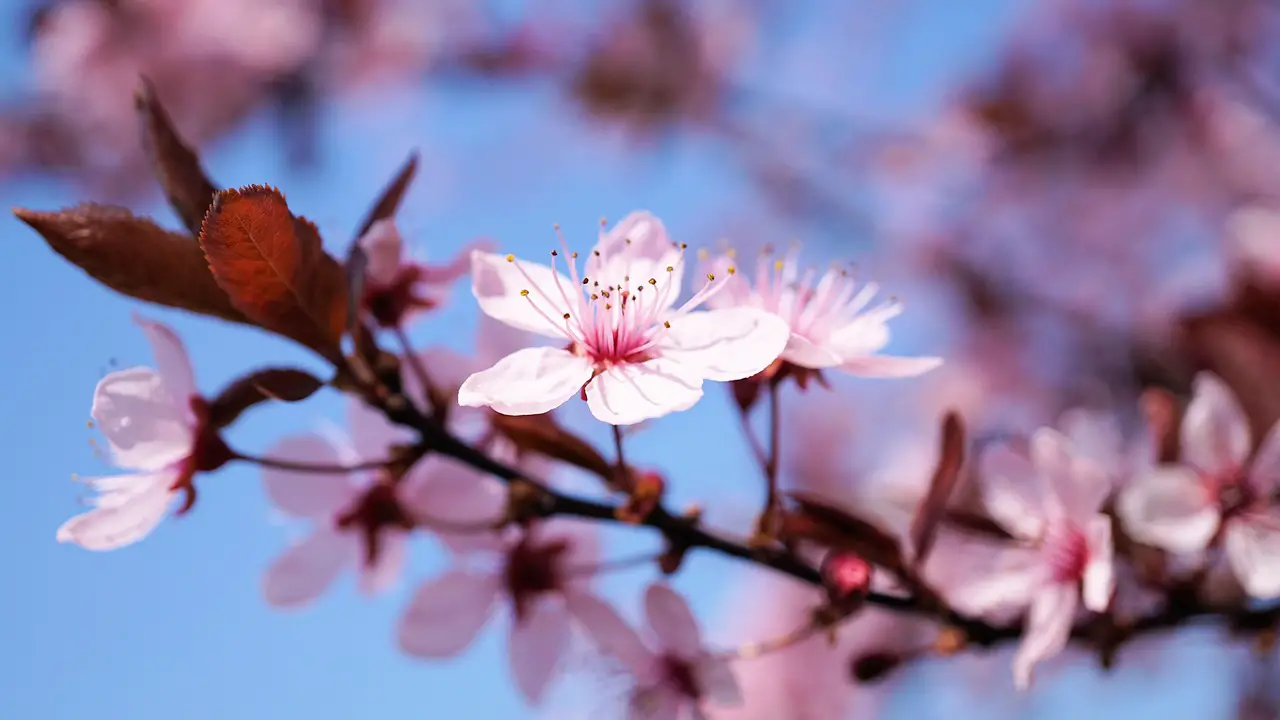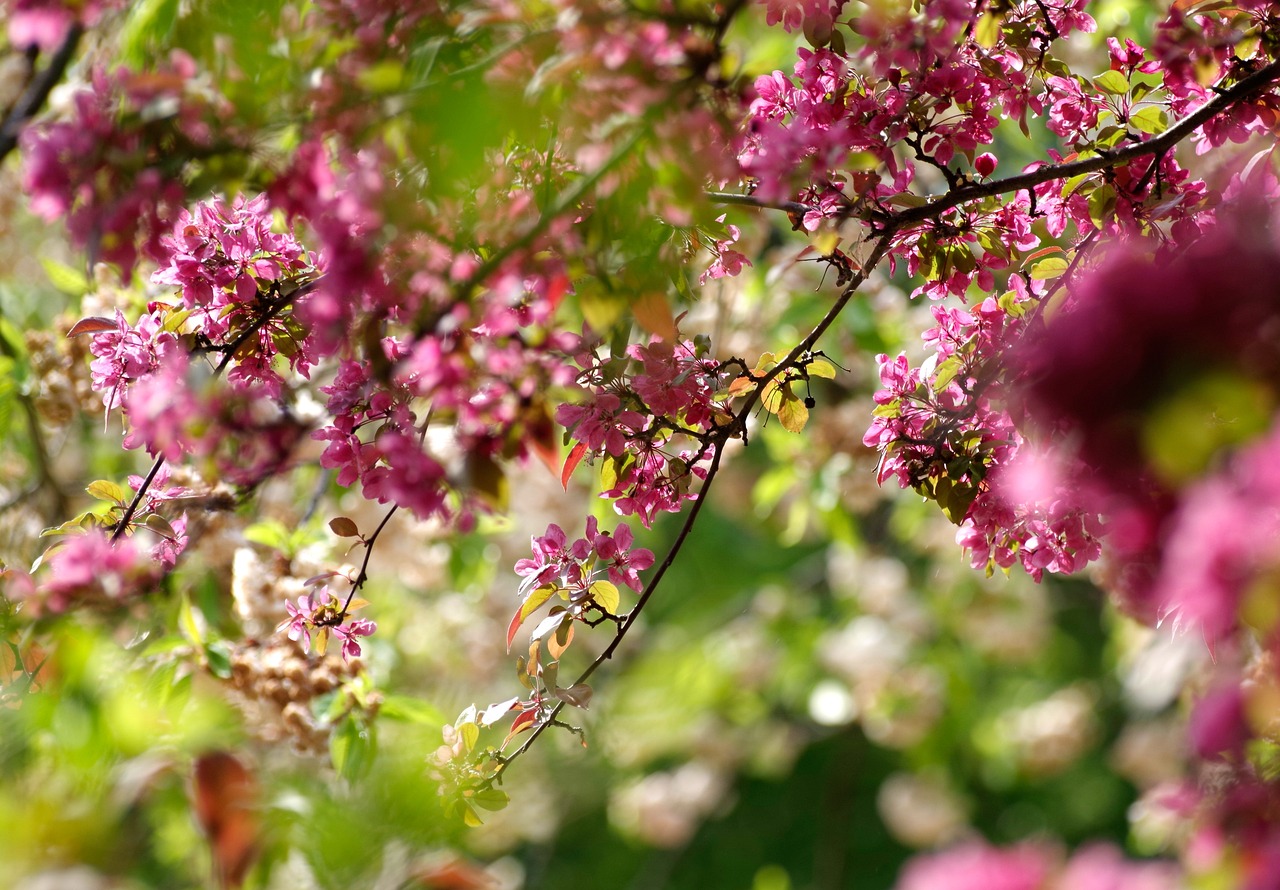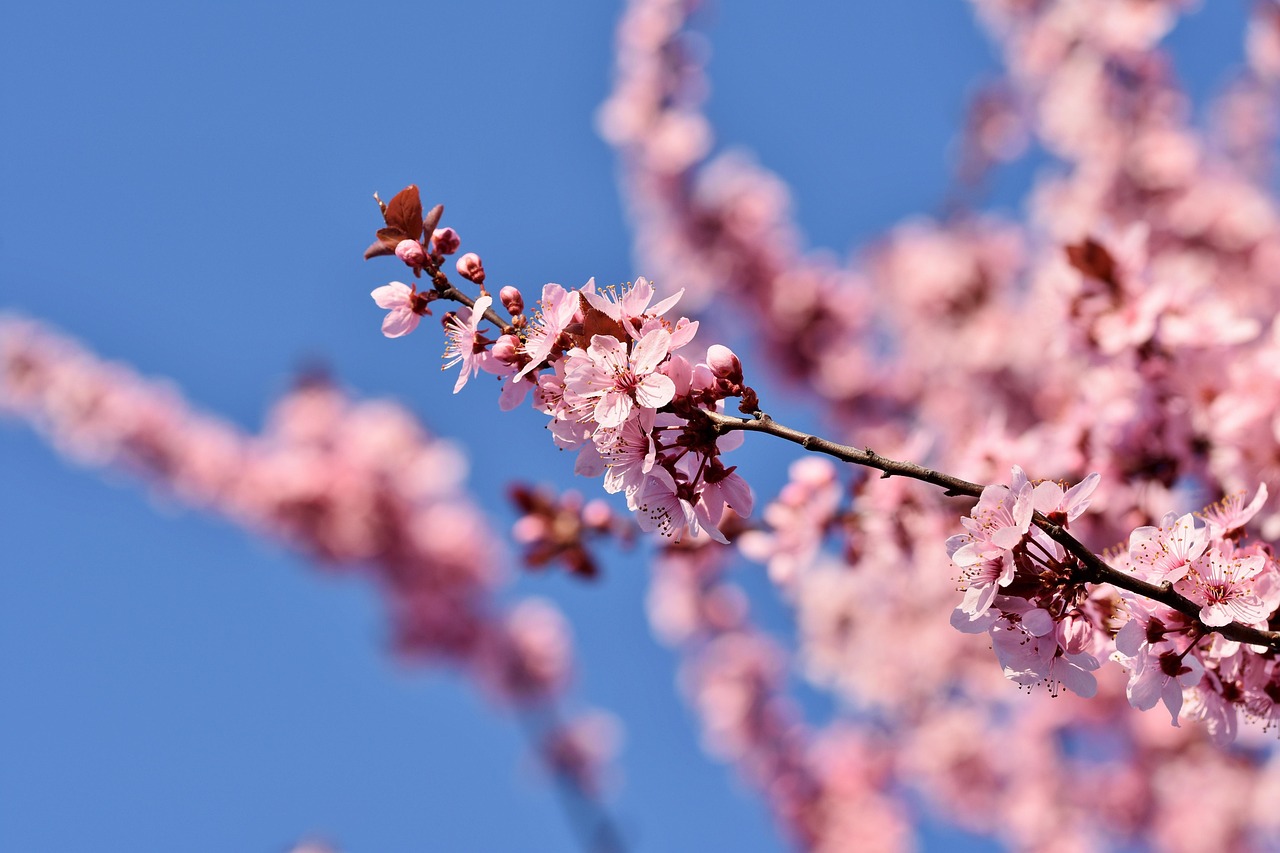The Yoshino cherry tree, famous for its stunning spring blooms, requires careful pruning to maintain its health and shape. Pruning should be done during late winter or early spring before new growth begins. Focus on removing dead or crossing branches and shaping the tree for optimal sunlight and air circulation.
The Yoshino cherry tree, known scientifically as Prunus x yedoensis, is one of the most beloved ornamental trees in the world. It is particularly cherished for its striking display of pink and white blossoms that herald the arrival of spring. Native to Japan, this tree has become a symbol of beauty and renewal in many cultures. The Yoshino cherry tree can grow up to 30 feet tall and wide, making it a perfect choice for parks, gardens, and streetscapes.

Pruning is an essential aspect of caring for Yoshino cherry trees. Proper pruning enhances the tree’s appearance, promotes healthy growth, and prevents disease. Knowing when and how to prune is crucial for achieving the best results. This guide will cover essential pruning techniques and tips specifically tailored for Yoshino cherry trees.
Understanding the Importance of Pruning
Pruning serves several vital purposes for the Yoshino cherry tree. These include:
- Health Maintenance: Regular pruning helps remove dead or diseased branches. This action can prevent pests and diseases from spreading.
- Shape and Structure: Pruning shapes the tree, allowing for better aesthetics and ensuring that the branches grow in a balanced manner.
- Sunlight and Air Circulation: By thinning out dense branches, you allow more sunlight and air to reach the inner parts of the tree. This reduces the risk of fungal infections.
- Encouraging Blooms: Effective pruning can stimulate new growth, leading to more abundant flowering in the spring.
To successfully prune a Yoshino cherry tree, it is important to understand its growth patterns and flowering habits. These trees typically bloom on last year’s wood, meaning that pruning too late in the season can remove potential flower buds.

Best Time to Prune
The timing of pruning is crucial for the health of your Yoshino cherry tree. The best times to prune are:
- Late Winter: Prune while the tree is still dormant, usually between late February and early March. This timing reduces stress on the tree and allows it to heal quickly.
- Early Spring: Just before blooming begins is another suitable time. However, be cautious not to prune too late, as this can remove flower buds.
Essential Tools for Pruning
Having the right tools will make the pruning process more efficient and effective. Here are some essential tools you will need:
- Hand Pruners: Ideal for cutting small branches up to ¾ inch in diameter.
- Loppers: Useful for larger branches that are too thick for hand pruners.
- Saw: A pruning saw is necessary for cutting larger limbs that cannot be handled by hand pruners or loppers.
- Gloves: Protect your hands while handling tools and branches.
- Ladder: A stable ladder may be required for reaching higher branches safely.
Pruning Techniques
When pruning a Yoshino cherry tree, it is important to follow specific techniques to promote healthy growth. Here are some key methods:

Thinning Cuts
This technique involves removing entire branches back to their point of origin. Thinning cuts help improve air circulation and sunlight penetration throughout the tree.
Heading Cuts
These cuts reduce the length of a branch without removing it entirely. Use heading cuts to shape the tree and encourage bushier growth. However, avoid excessive heading cuts, as this can lead to weak growth.
Removing Dead or Diseased Wood
Always prioritize removing dead or diseased branches. Look for signs of discoloration, decay, or insect activity. Make clean cuts at the base of these branches to prevent further issues.

Key Considerations During Pruning
As you prepare to prune your Yoshino cherry tree, keep the following considerations in mind:
- Avoid Over-Pruning: Too much pruning can stress the tree and lead to poor health.
- Be Mindful of Shape: Maintain a balanced shape by evenly distributing cuts around the tree.
- Monitor Weather Conditions: Avoid pruning during wet conditions, as this can increase the risk of disease.
By understanding these fundamental aspects of Yoshino cherry tree pruning, you can ensure that your ornamental tree remains healthy and vibrant throughout the seasons. Proper care will lead to beautiful blooms and a thriving landscape feature that you can enjoy for years to come.
Common Pruning Mistakes to Avoid
While pruning is essential for maintaining a healthy Yoshino cherry tree, several common mistakes can hinder its growth and beauty. Understanding these pitfalls will help you achieve better results.
- Ignoring the Tree’s Natural Shape: Each tree has a natural growth pattern. Forcing a Yoshino cherry tree into an unnatural shape can weaken it. Always respect its natural form when making cuts.
- Pruning at the Wrong Time: Pruning too late in the spring can remove flower buds. Stick to late winter or early spring for optimal results.
- Using Dull Tools: Dull tools can crush branches instead of making clean cuts. Always ensure your pruning tools are sharp to promote quicker healing.
- Neglecting Safety: Safety should be a priority. Always wear gloves and goggles, especially when using saws or ladders.
Pruning Techniques: Step-by-Step Guide
Now that you understand the importance of pruning and common mistakes to avoid, let’s dive deeper into specific techniques. Here is a step-by-step guide on how to effectively prune your Yoshino cherry tree.
Step 1: Assess the Tree
Before making any cuts, take a moment to examine your tree. Look for:
- Overall shape and size.
- Dead or damaged branches.
- Branches that cross over each other.
- Areas where sunlight is blocked.
Step 2: Gather Your Tools
Ensure you have all necessary tools ready before you start pruning. This includes:
- Hand pruners for small branches.
- Loppers for mid-sized branches.
- A pruning saw for larger limbs.
- A ladder if necessary.
- Protective gear such as gloves and goggles.
Step 3: Begin with Dead or Diseased Wood
Start your pruning session by removing any dead or diseased wood. Look for:
- Branches that are discolored or brittle.
- Signs of decay or fungus.
- Insect infestations.
Make clean cuts at the base of these branches, ensuring that you do not leave stubs, as these can lead to further issues.
Step 4: Thin Out the Canopy
Next, focus on thinning out the canopy to improve air circulation and sunlight penetration. This involves:
- Selecting branches that are too dense or crowded.
- Removing select branches by cutting them back to the trunk or main branch.
- Avoiding the removal of more than one-third of the canopy in a single season to prevent stress on the tree.
Step 5: Shape the Tree
After thinning, it’s time to shape your Yoshino cherry tree. Focus on:
- Maintaining a balanced structure by evenly distributing cuts around the tree.
- Cuts that encourage upward growth rather than outward growth, which can lead to a more attractive form.
Step 6: Final Touches
Once you have completed your major cuts, take a step back and evaluate your work. Make any minor adjustments as needed. Finally, clean up any debris from the ground to prevent diseases from spreading.
Aftercare Following Pruning
The care you provide after pruning is just as important as the act itself. Proper aftercare will help your Yoshino cherry tree recover quickly and thrive. Here are some aftercare tips:
- Watering: Ensure that your tree receives adequate water after pruning, especially if it’s during a dry spell. This helps reduce stress and encourages new growth.
- Mulching: Apply a layer of organic mulch around the base of the tree. This helps retain moisture and suppress weeds.
- Monitoring for Pests: Keep an eye out for any pests or diseases that may affect your tree post-pruning. Early detection can save your tree from severe damage.
- Nourishment: Consider applying a balanced fertilizer in early spring to encourage healthy growth following pruning.
The Role of Seasonal Changes in Pruning
Understanding seasonal changes can significantly impact your pruning strategy for Yoshino cherry trees. Different seasons offer distinct opportunities and challenges for tree care.
Spring
This is the prime blooming season for Yoshino cherry trees. While minor pruning can be done in late spring, significant cuts should be avoided to preserve flower buds. Focus on removing dead or diseased wood after blooming has finished.
Summer
If necessary, light pruning can be done during summer to manage growth. However, avoid heavy pruning during this time as it can stress the tree during hot weather.
Fall
The fall season is generally not recommended for pruning due to the tree preparing for dormancy. Any cuts made during this time can leave the tree vulnerable to winter diseases and pests.
Winter
Late winter is ideal for thorough pruning while the tree is dormant. This timing allows for healthy growth in spring and promotes vibrant blooms once the weather warms up.
By following these guidelines and understanding the unique needs of your Yoshino cherry tree, you will be well-equipped to maintain its beauty and health throughout the seasons.
Identifying Problems and Diseases in Yoshino Cherry Trees
Maintaining a healthy Yoshino cherry tree involves not only proper pruning but also identifying and addressing potential problems. Various pests and diseases can threaten the tree’s well-being. Knowing how to spot these issues early can make a significant difference in the health of your tree.
Common Pests
Several pests may infest Yoshino cherry trees, causing damage to the leaves and bark. Here are some of the most common pests to watch for:
- Cherry Fruit Flies: These insects lay eggs on developing cherries, leading to fruit damage. Signs include small holes or spots on the fruit.
- Spider Mites: Tiny pests that can cause leaf discoloration and webbing. Affected leaves may appear speckled or yellowed.
- Aphids: Small, green insects that suck sap from the tree. They can cause stunted growth and distorted leaves.
- Scale Insects: These pests attach themselves to branches and leaves, sucking nutrients. Look for small, raised bumps on stems and leaves.
Signs of Infestation
To protect your Yoshino cherry tree, it is crucial to identify signs of pest infestation early. Common signs include:
- Discoloration of leaves or fruit.
- Stunted growth or wilting.
- Visible insects or webbing on branches.
- Sticky residue (honeydew) on leaves, indicating aphid presence.
Treatment Options
If you notice any signs of pest infestation, consider the following treatment options:
- Insecticidal Soap: A safe option for controlling soft-bodied insects like aphids and spider mites.
- Neem Oil: A natural pesticide that disrupts the life cycle of various pests.
- Horticultural Oil: Effective against scale insects and other pests, it suffocates them on contact.
- Regular Monitoring: Keep an eye on your tree for any signs of pests and address issues promptly.
Disease Management for Yoshino Cherry Trees
Diseases can also pose a significant threat to Yoshino cherry trees. Identifying symptoms early is critical for effective management. Here are some common diseases that affect these trees:
Common Diseases
- Canker Disease: Characterized by sunken areas on branches and trunks. This disease can weaken the tree and lead to branch dieback.
- Powdery Mildew: A fungal infection that produces a white, powdery substance on leaves. It typically occurs in warm, dry conditions.
- Bacterial Canker: Symptoms include dark lesions on leaves and branches. Infected areas may ooze sap and lead to dieback.
- Root Rot: Caused by overwatering or poor drainage, root rot leads to yellowing leaves and tree decline.
Identifying Symptoms
Recognizing symptoms of these diseases early can prevent further damage. Key symptoms include:
- Wilting leaves or branches.
- Discolored or mottled foliage.
- Bark lesions or oozing sap.
- Persistent leaf drop or premature fruit drop.
Treatment Strategies
The treatment approach for each disease varies. Here are some strategies for managing common diseases:
- Canker Disease: Prune affected branches back to healthy wood and sterilize tools between cuts to prevent spread.
- Powdery Mildew: Improve air circulation around the tree and apply fungicides if necessary during outbreaks.
- Bacterial Canker: Remove infected tissues and avoid wounding the tree during wet weather.
- Root Rot: Ensure proper drainage and avoid overwatering. Consider amending soil with organic matter to improve aeration.
The Role of Fertilization in Tree Health
A well-fertilized Yoshino cherry tree is better equipped to resist diseases and pests. Proper fertilization supports healthy growth and vibrant blooms. Here are some key points to consider regarding fertilization:
When to Fertilize
The best time to fertilize your Yoshino cherry tree is in early spring, just as new growth begins. This timing allows nutrients to support active growth through the growing season.
Types of Fertilizers
Selecting the right type of fertilizer is crucial for promoting healthy growth. Consider using:
- Balanced Fertilizers: Look for a fertilizer with equal parts nitrogen (N), phosphorus (P), and potassium (K), such as a 10-10-10 formulation.
- Slow-Release Fertilizers: These provide nutrients gradually, reducing the risk of over-fertilization.
- Organic Options: Compost or well-rotted manure can improve soil health while providing nutrients.
Application Tips
When applying fertilizer, keep these tips in mind:
- Follow package directions for application rates based on tree size and age.
- Avoid applying fertilizer too close to the trunk; spread it evenly around the drip line of the tree.
- Water the tree thoroughly after fertilization to help nutrients penetrate the soil.
Caring for your Yoshino cherry tree involves a multifaceted approach that includes regular pruning, pest and disease management, and proper fertilization. By staying vigilant and proactive, you can ensure that your tree remains healthy and beautiful throughout its life cycle.
Enhancing the Aesthetics of Your Landscape with Yoshino Cherry Trees
The Yoshino cherry tree is not only a stunning ornamental tree, but it also provides numerous benefits to your landscape. Its beautiful blossoms create a spectacular display in spring, making it an ideal focal point in gardens and parks. Additionally, these trees can enhance biodiversity by attracting pollinators such as bees and butterflies.
Incorporating Yoshino cherry trees into your landscape design can provide numerous visual and ecological benefits. Consider the following aspects:
- Seasonal Interest: Beyond spring blooms, Yoshino cherry trees provide vibrant fall foliage, showcasing hues of yellow and orange.
- Shading: A mature Yoshino cherry tree can provide ample shade, making it a pleasant spot for outdoor activities during warm months.
- Privacy Screens: When planted strategically, these trees can act as natural privacy screens, enhancing the intimacy of your outdoor spaces.
- Wildlife Habitat: The tree’s flowers and leaves offer nourishment to various wildlife species, contributing to a healthier ecosystem.
Choosing the Right Location for Your Yoshino Cherry Tree
Choosing the right location for planting your Yoshino cherry tree is essential for its growth and longevity. Here are some factors to consider when selecting the perfect site:
- Sunlight: Yoshino cherry trees thrive in full sun. Aim for a location that receives at least six hours of direct sunlight daily.
- Soil Quality: Well-drained soil is crucial. Avoid areas where water tends to pool after heavy rain. Amending soil with organic matter can improve drainage and nutrient levels.
- Space: Ensure there is enough room for the tree to grow. Ideally, plant it at least 20 feet away from buildings and other trees to allow for proper air circulation and growth.
- Protection from Wind: Planting near structures or windbreaks can help shield young trees from strong winds, which can damage branches and impede growth.
Companion Planting with Yoshino Cherry Trees
Companion planting can enhance the overall health and aesthetics of your garden. Pairing your Yoshino cherry tree with compatible plants can offer benefits such as pest control, improved growth, and enhanced visual interest. Here are some great companion plants:
- Spring Bulbs: Daffodils and tulips bloom alongside the cherry tree, providing additional color in early spring.
- Perennials: Plants like hostas and ferns thrive in the shade provided by the tree’s canopy, creating a lush underlayer.
- Ground Covers: Low-growing plants such as creeping thyme or clover can help suppress weeds while complementing the tree’s appearance.
- Pollinator-Friendly Plants: Adding flowering plants like coneflowers or black-eyed Susans will attract beneficial insects that help pollinate your cherry tree.
Caring for Your Yoshino Cherry Tree Long-Term
Caring for your Yoshino cherry tree involves ongoing attention beyond pruning. Here are some long-term care tips to ensure its health and vibrancy:
- Regular Inspections: Periodically check for pests, diseases, and any signs of stress. Early detection allows for prompt action.
- Watering Needs: During dry spells, ensure that your tree receives adequate watering. Deep watering encourages strong root development.
- Seasonal Mulching: Apply mulch each spring to retain moisture and suppress weeds. Refresh mulch annually to maintain its effectiveness.
- Professional Help: If you encounter significant issues or are unsure about tree care, consider consulting an arborist for expert advice.
Final Thoughts
The Yoshino cherry tree is a remarkable addition to any landscape, known for its stunning beauty and environmental benefits. With proper pruning techniques, pest management strategies, and ongoing care, you can ensure that your tree thrives for years to come. Understanding its unique needs will allow you to enjoy the spectacular blooms each spring while fostering a healthy ecosystem in your garden.
By integrating these practices into your gardening routine, you not only enhance the charm of your outdoor space but also promote biodiversity and ecological balance. Whether you are planting a new tree or nurturing an existing one, the effort invested in caring for a Yoshino cherry tree will reward you with beauty and enjoyment throughout the seasons.
Your journey with the Yoshino cherry tree is not just about maintaining a beautiful ornamental plant but also about creating a vibrant environment that supports wildlife and enriches your landscape. Embrace the process of nurturing these beautiful trees, and you will be rewarded with their breathtaking beauty year after year.
